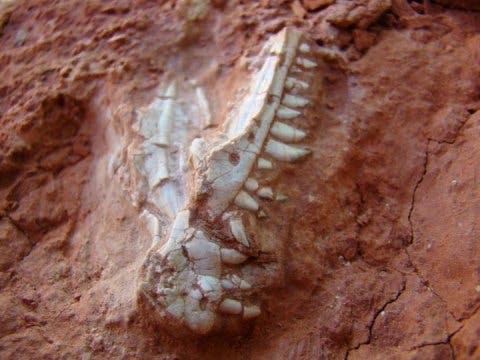Dinosaurs ruled the Earth for millions of years, but they took it slowly. A new study found evidence that dinosaurs’ emergence was much more gradual than we previously thought.

Credit: Cabreira et al.
Paleontologists working in Brazil have discovered the fossils of two small dinosaurs alongside one of a lagerpetid, a group of animals that are recognized as precursors of dinosaurs. It’s the first time a dinosaur fossil and a dinosaur precursor fossil were found side by side. The fossils were uncovered from the ~230-million-year-old Carnian Santa Maria Formation in Brazil, one of the oldest and most famous dinosaur fossil sites.
The study reads:
This is the first time nearly complete dinosaur and non-dinosaurdino sauromorph remains are found together in the same excavation, clearly showing that these animals were contemporaries since the first stages of dinosaur evolution.
The fact that they were discovered side by side shows that as dinosaurs emerged, their precursors didn’t disappear. Instead, they likely lived side by side for quite a while.
“We now know for sure that dinosaurs and dinosaur precursors lived alongside one another and that the rise of dinosaurs was more gradual, not a fast overtaking of other animals of the time,” says Max Langer of Brazil’s Universidade de São Paulo who led the study.
The fossils themselves are impressive and offer much-needed insight. The lagerpetid conserves the first skull, scapular, and forelimb elements and might provide more information as to what this group looked and behaved like. At the moment, the family isn’t really that well understood and they were named only in 2009. They were rather small, with their legs being about 25 centimetres (9.8 in) long, and their total size still being uncertain. They looked somewhat similar to velociraptors, but had a number of distinctive features.
Not content with even these high-quality fossils, Dr Langer and his colleagues are now using CT scans to see the creature’s fossil in more detail. They hope to better understand these creatures, and through them, figure out how dinosaurs developed and radiated from their initial cradle – whatever that may have been.
Journal Reference: Sergio Furtado Cabreira, Alexander Wilhelm Armin Kellner, Sérgio Dias-da-Silva, Lúcio Roberto da Silva, Mario Bronzati, Júlio Cesar de Almeida Marsola, Rodrigo Temp Müller, Jonathas de Souza Bittencourt, Brunna Jul’Armando Batista, Tiago Raugust, Rodrigo Carrilho, André Brodt, Max Cardoso Langer. A Unique Late Triassic Dinosauromorph Assemblage Reveals Dinosaur Ancestral Anatomy and Diet. Current Biology, 2016; DOI: 10.1016/j.cub.2016.09.040






